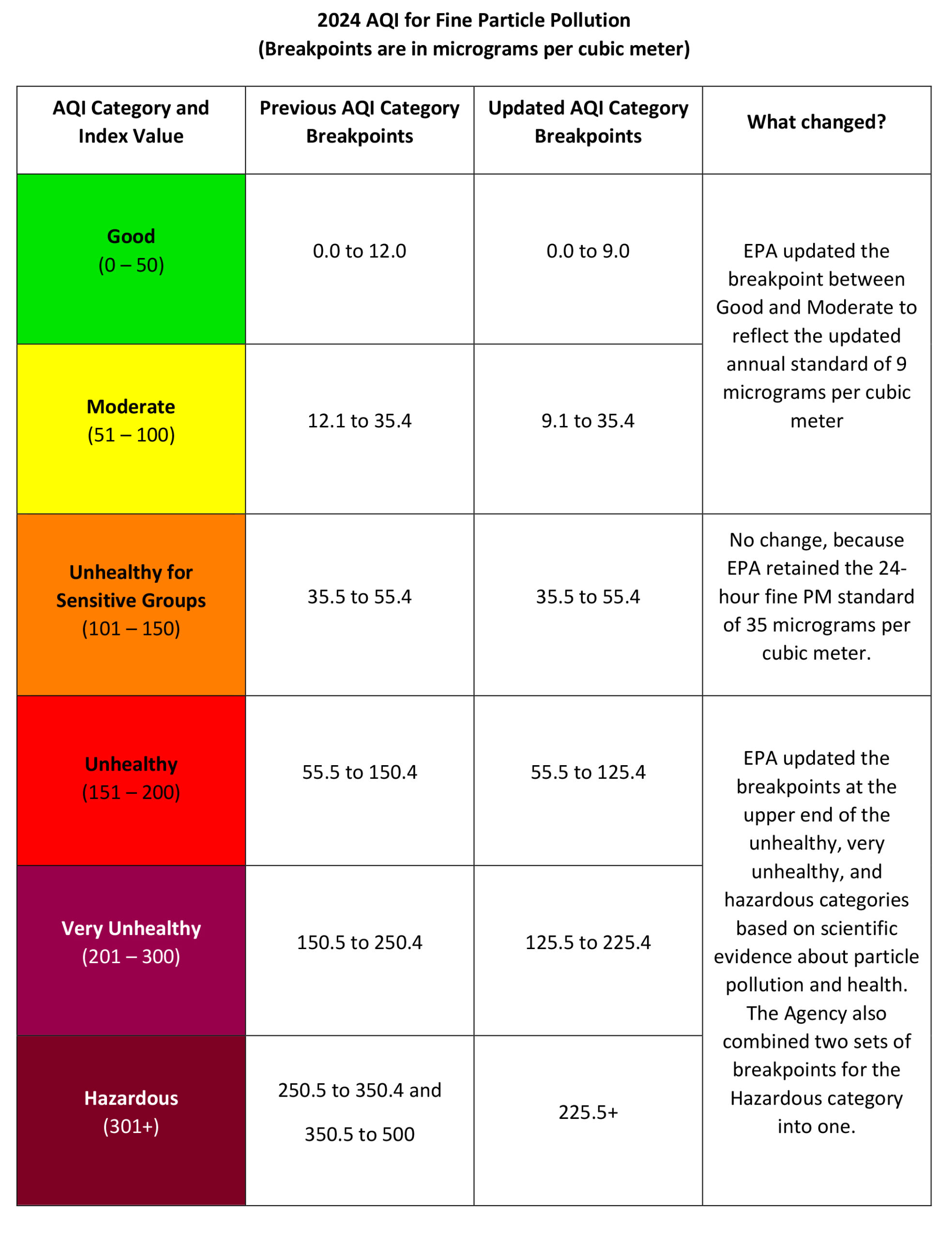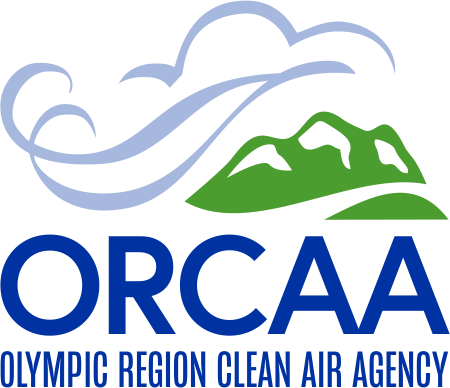The U.S. Environmental Protection Agency (EPA) recently strengthened the federal standard for fine particulate matter pollution (PM2.5).
According to the EPA regulators, the National Ambient Air Quality Standard (NAAQS) for annual PM2.5 levels was tightened to “provide increased public health protection, consistent with the available health science.” The new primary annual standard, set to take effect May 6, 2024, is set at 9 micrograms per cubic meter (μg/m3). The previous standard was 12 μg/m3.
As part of the revision, EPA also changed some of the breakpoints in the U.S. Air Quality Index (AQI) to reflect the new standard and to further help protect human health. The AQI is a color-coded tool used by air agencies around the country to communicate air quality to the public.
As a result of the AQI revisions, ORCAA does not anticipate significant changes in the number of days of reported higher levels on the AQI chart, though some areas may see a few more days in the moderate (Code Yellow) category because of the changes in the AQI breakpoints. The moderate category now begins when fine particle pollution concentrations reach 9 micrograms per cubic meter of air (the level of the updated annual air quality standard). Previously, the moderate category began at 12 micrograms per cubic meter.
There should not be any significant increases in days in the other AQI categories as a result of the updates to the category breakpoints. However, when events like wildfires affect air quality, the revised breakpoints in the upper AQI categories may shift some days from Unhealthy to Very Unhealthy, or from Very Unhealthy to Hazardous.
Read more about the change in the PM2.5 standard at https://www.epa.gov/system/files/documents/2024-02/pm-naaqs-air-quality-index-fact-sheet.pdf.


